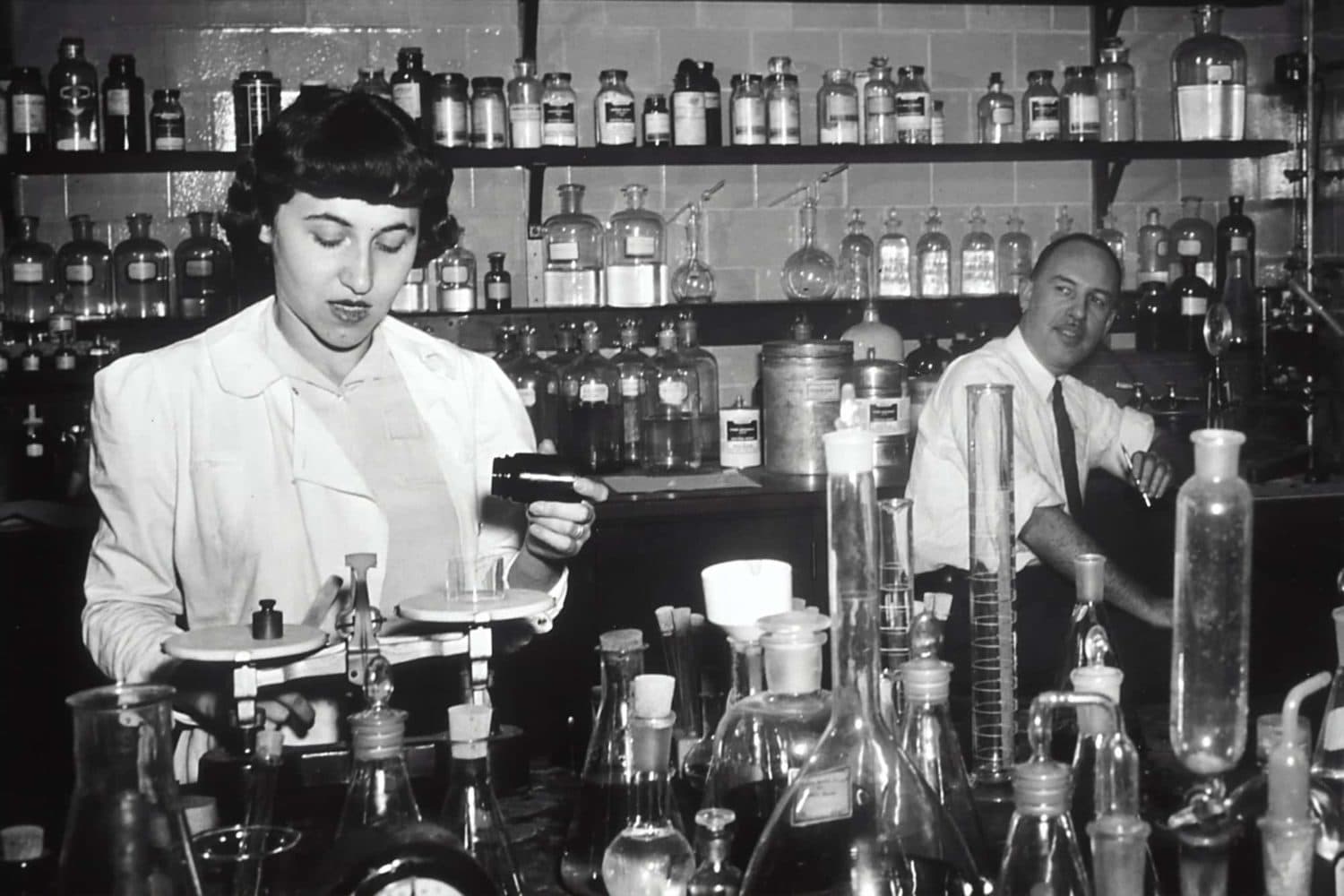For many people, marijuana is associated with classic stereotypes, such as hippies and stoners. In actuality, cannabis has long been recognized as a useful therapy by many cultures, and its negative stigma originates from decades of fear-based propaganda. Historically, medical practitioners mixed cannabis into medicines and teas to treat pain and other ailments. It wasn’t considered a dangerous drug like it came to be known in the United States, where marijuana remains listed as a Schedule I drug alongside LSD and heroin. As these out-of-date ideas are dismantled, it is helpful to understand the therapeutic history of the plant’s use and medical value to historical cultures.
Hemp was an important agricultural crop in ancient times, harvested for its high-protein seeds, oil, and fiber used for rope and clothing. Particularly in China, hemp was grown for hundreds of uses, which naturally progressed to the discovery of medicinal properties. Various illnesses, including gout, rheumatism, malaria, and poor memory, were treated with marijuana tea by the Chinese Emperor Shen Neng around 2700 BC. The first record of its use in medicine comes from the Pen-ts’ao ching, the world’s oldest pharmacopoeia. Attributed to Shen Neng, the Pen-ts’ao ching also mentions the psychoactive effects of cannabis stating that “ma-fen (fruit of cannabis), if taken over the long-term, makes one communicate with spirits and lightens one’s body.” Between 117 and 207 AD, Hua T’o, the founder of Chinese surgery, described cannabis as an analgesic, and he is said to have used a mixture of cannabis and wine to anesthetize his patients. Cannabis use spread west as it increased in China, reaching India by approximately 1000 BC.
India has always been closely linked to cannabis use – medically, religiously, recreationally, and spiritually – especially when compared to the Western world and other parts of Asia. Drinks containing cannabis were and are still being brewed for simple enjoyment as well as medical purposes. Most famous of all is bhang, a beverage made of cannabis paste, milk, butter and spices. The Indian Hemp and Drugs Commission has described the history of cannabis use in India in the book Marihuana: The First Twelve Thousand Years:
“To the Hindu the hemp plant is holy. A guardian lives in the bhang leaf… To see in a dream the leaves, plant, or water of bhang is lucky… A longing for bhang foretells happiness. Besides as a cure for fever, bhang has many medicinal virtues… It cures dysentery and sunstroke, clears phlegm, quickens digestion, sharpens appetite, makes the tongue of the lisper plain, freshens the intellect, and gives alertness to the body and gaiety to the mind.”
Based on this excerpt, we can appreciate that the drug has been a focal point within India’s health care for thousands of years.
By 450 BC, cannabis had reached the Mediterranean. In a Scythian funeral ceremony, as written by Herodotus, a Greek historian, cannabis seeds were burned ritually for their euphoric effects. In Persia, one of the most influential writers of the medieval period, Avicenna, published “Avicenna’s Canon of Medicine”, which summarized the medical knowledge of the time. In them, Avicenna reported the effectiveness of cannabis as a treatment for gout, edema, infections wounds and headaches. His texts have been studied extensively in Western medicine from the thirteenth to nineteenth centuries, having a lasting impact on Western medicine. In Arabic medicine, cannabis was regarded as an effective treatment for epilepsy. First to document this was Al-Mayusi, between 900 and 1000 AD, followed by al-Badri (1464 AD), who wrote of the chamberlain’s epileptic child being treated with cannabis leaves.
Cannabis was transported from India to Africa by Arab traders in the 1300s, where it was utilized in treatment of malaria, fever, and asthma. Cannabis arrived in South America in the 1500’s due to the slave trade, which brought seeds from Angola to Brazil. Cannabis was widely utilized by the African community in Brazil, particularly in religious rites like the “Catimbo”, which employed cannabis for both magical and medical purposes. Cannabis travelled north from Brazil to Mexico, where it was used recreationally by people from low socioeconomic backgrounds. From there it was introduced into the United States through immigration.
When Irish physician William O’Shaughnessy published “On the preparations of Indian hemp, or gunjah,” in 1839, it was the first time therapeutic applications of cannabis were brought to Western medicine. O’Shaughnessy first encountered cannabis during his employ as a physician in India, and he conferred with local elders and healers to gain an understanding of medicinal uses of cannabis within India’s culture. After performing tests and studying the effects of cannabis on animals, he gave cannabis extracts to his patients and observed the analgesic and sedative effects. His greatest achievement was calming the muscle spasms produced by tetanus and rabies.
Cannabis usage in medicine grew in popularity, reaching a pinnacle in the late eighteenth and early nineteenth centuries, when it was widely available as over-the-counter medications such “Piso’s remedy“. More than 100 publications on its therapeutic uses have been published as a result of its rapid rise in popularity. Sajous’ Analytic Cyclopedia of Practical Medicine, published in 1924, outlined what were thought to be the principal medicinal uses of cannabis at the time. They came to the conclusion that cannabis could help with migraines, coughing, and inflammation, as well as infections like tetanus, rabies, and gonorrhoea.
Cannabis use began to wane after this significant surge in 1900s medicine due to a variety of reasons. Vaccines for diseases like tetanus had rendered cannabis outdated as a treatment. In addition, the discovery of synthetic painkillers such as aspirin met a portion of the demand for analgesics. The greatest cause in the fall of cannabis use, however, could be the discovery of the hypodermic needle and its application to opioids. As a result of these reasons, the prevalence of cannabis and its use as an analgesic has decreased, making it more vulnerable to political influences in the future.
In the early 1900s, the recreational usage of cannabis in the United States of America was largely restricted to immigrant minority groups that had come to the country at the turn of the century from Mexico and Africa. By the 1930s, recreational use of cannabis had increased among all US residents, prompting narcotics officers to lobby for more restrictive legislation on both recreational and medicinal cannabis usage. According to the American Medical Association however, cannabis remains a medical agent due to its medicinal value, low toxicity, and lack of evidence “…to establish that its medicinal usage is contributing to the development of cannabis addiction.” Despite protests, the Marijuana Tax Act was passed in 1937, thereby putting an end to the already limited use of cannabis as a medicine. It was completely removed from the American pharmacopoeia in 1941. Cannabis use in medicine was virtually non-existent for the following two decades, and it wasn’t until the 1970s that medicinal interest was rekindled when the increase of recreational use allowed for new and further studies into its effects.
During this renewed period of interest, the CB1 receptor was discovered in 1988. It was shown to be the most prevalent neurotransmitter receptor in the central nervous system and to bind to THC. This discovery was followed by the identification of CB2, located predominantly in the peripheral nervous system and on immune cells. The presence of cannabinoid receptors in brain and immunological cells hinted at a plausible mechanism of action that could explain the analgesic, sedative, and immunoregulatory effects of cannabis. As the modern resurgence of cannabis use for medical reasons continues, scientific discoveries about the plant continue to cement a place for cannabis among other valuable and important medicines.
Many diverse cultures have been exposed to cannabis over the last few thousand years, and many have recognized its medical potential. Cannabis use in the West declined owing to a negative political campaign, and as a result, its medical value was forgotten, only recently to be rekindled. The discovery of active ingredients within the plant, as well as endogenous cannabinoid receptors, sparked research that proves that it can have a direct and positive effect on the body.
© Kanab Inc. – Kanab Inc. is a Toronto based cannabis retail company that honors the historical significance and uses of the cannabis plant across cultures and civilizations. Kanab has now opened its first cannabis dispensary at the intersection of Don Mills Road and York Mills Road in North York region of Toronto, Ontario (South of 401, West of 404 / Don Valley Parkway, and East of Leslie). For more info, please visit: kanab.ca






